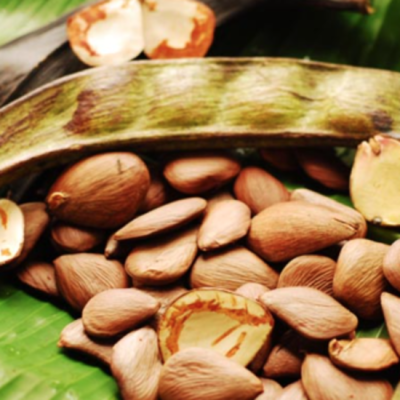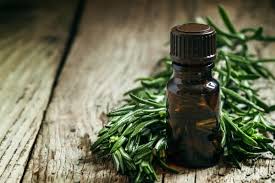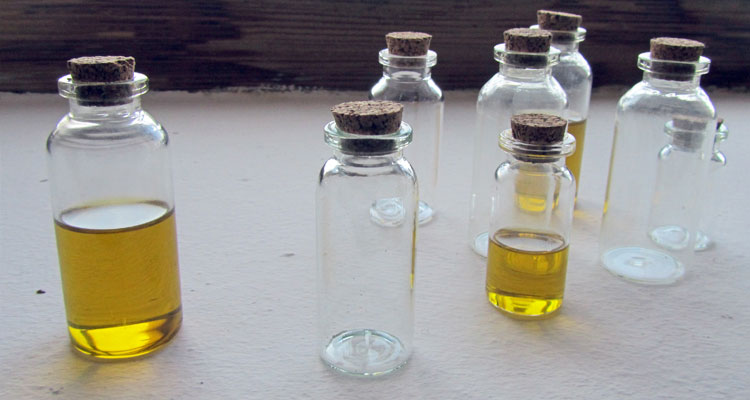TOP SEVEN USES OF AVOCADO OIL

As its name suggests, avocado oil is an edible oil extracted from avocados, the fruit of a plant known as Persea americana. It is native to central America, and known to people around the world by a multitude of names – in Spanish it is known as aguacate, while South American Spanish-speaking countries refer to it as palta. It is called abacate in Portugal, and many Asian countries such as China and Vietnam refer to it as “butter fruit” or “alligator pear”, alluding to its creamy flesh and its characteristic rough green skin; in Taiwan, it is known to locals as “cheese pear”. In the United Kingdom, the fruit is still sometimes referred to as “avocado pear”.
Avocado oil is unusual in that it is derived from the fleshy pulp of the fruit surrounding the avocado pit, instead of from the crushed seed, which is the case for many other vegetable oils. Extra virgin or raw avocado oil is a deep emerald colour when extracted, due to the high levels of chlorophyll and carotenoids contained within the oil. Its bright colour pales into an olive-green or amber hue when refined further. The exact flavour of avocado oil produced varies depending on the type of avocado used, but its taste is generally rich and nutty, resembling that of the original fruit. The well-known Hass cultivar with pebbly skin produces avocado oil with undertones of grassy, buttery and mushroom-like flavours; The Fuerte cultivar, which has smooth skin, has a slightly different flavour profile with stronger hints of the mushroom-y taste.
Avocado oil has only recently been introduced as a culinary oil, but compares well with olive oil in the versatility of its use. It has a density similar to that of common cooking oils such as canola oil, and is unremarkable in that aspect; however, its main point of interest lies in its unusually high smoke point, in both unrefined and especially its refined forms. This is due to avocado oil being mildly acidic with a high monounsaturated fatty acid content, which helps prevent the oil from breaking down and losing its nutrient value at high temperatures. The smoke point of raw avocado oil is 249 °C, and the refined form can reach temperatures up to 271 °C. This makes it an excellent culinary oil as it can be used to conduct most, if not all forms of high heat cooking, such as baking, frying, roasting, sautéing and even barbecuing. It is hard to pinpoint the exact smoke point for a specific type of avocado oil, as it is largely affected by the quality and style of refinement and how the oil has been subsequently stored and handled. But like all oils, the general rule is that the more refined an avocado oil is, the less ‘impurities’ it will have and the higher its smoke point will be.
How is Avocado Oil Made?
Peru is a major supplier of avocados worldwide, boasting thousands of hectares worth of Hass avocado orchards in central and Western Peru. Large amounts of the fruit are then exported to Europe and North America. An advantage to growing avocados is that they are a year-round crop, and fruit production is not seasonally restricted like many other crops are. For this reason, some olive oil processing facilities opt to process avocado oil as an alternative when olives are not in season, and are most commonly located in Australia and New Zealand.
The Hass cultivar of avocados has been described by New Zealand as the best variety for oil extraction purposes, due to it having a large amount of flesh with a subsequently high oil content. This allows for a greater volume of high-quality oil to be extracted from each fruit. The yield from avocado farming can vary immensely from orchard to orchard – the amount of pulp relative to the fruit varies from 60 to 75% depending on the cultivar, and the oil content of each avocado varies between 16-30% of the fruit’s mass, depending on the location of the orchard and the climate conditions it is exposed to.
To produce avocado oil, the avocado pulp must first be extracted. Ripe avocados are picked from trees and washed, following which the skins and pits are mechanically removed. The pulp obtained then goes through a cold-press process, where it is malaxed (mixed) with fresh, cold water at a low temperature to initiate the oil separation process. The mixing process is kept as short as possible to minimize oxidation of the oil, and what results is a vat of green, mushy ‘guac’. To extract the oil, the mixture is passed through a two-part centrifuge system, which removes the remaining pulp and water. The centrifuge is essentially a large drum which spins at high speeds, forcing the liquids (oil and water) out of the semi-solid pulp. As avocado oil is less dense than water, it floats in a layer above the water and is drained from the drum via strategically placed holes. The oil is then filtered through a series of screens to remove any remaining particles, resulting in a thick, smooth and bright green extra virgin avocado oil.
Refined avocado oil is produced by passing extra virgin avocado oil through multiple filters of diatomaceous earth and steam. This process refines the oil naturally, without the use of any chemical additives. What happens in this process is that the triglycerides and chlorophyll content in extra virgin avocado oil is filtered out, leaving it ‘pure’ which dulls its bright green colour to deeper olive green or amber. Refining avocado oil also removes the organic matter within the oil that causes it to smoke at lower temperatures, making it a better cooking oil for use in high heat.
It is recommended that one should not attempt to remove the pits from avocados with a knife while holding the fruit in one’s hand. Aside from the increasingly common and unfortunate “avocado hand” phenomenon faced by avocado lovers around the world, the fruit and its derivatives are not known to pose any dangers or health risks to humans whatsoever. However, allergies to avocado do exist, and usually go hand in hand with latex allergies, as both avocados and latex (along with other foods such as bananas, chestnuts and kiwis) contain some similar allergens. Avocado can also interfere with the effects of warfarin, commonly known by the brand name Coumadin, which is a blood thinner that is used to slow blood clotting.
History of Avocado Oil
The modern name of the avocado fruit has its roots in central Mexico, where most of the Nahua (Aztec) people resided. The word “avocado” originates from the Nahuatl word “ahuácatl”, which means ‘testicle’ and was used as an early name for the fruit. The reasoning behind this name was thought to be due to the avocado’s resemblance to the male scrotum in both shape and texture, and could also be related to the fact that the avocado was considered an aphrodisiac by the Aztecs. They were thought to be so sexually powerful that Aztec virgins were actually restricted from contact with the fruit. The word “ahuácatl” can also be compounded with other words to form new meanings, such as in “ahuácamolli”, meaning avocado soup or sauce, from which the Spanish word guacamole originates.
When colonizing Spaniards came into contact with the Nahua tribes, and subsequently with avocados, they were unable to pronounce its Nahuatl name accurately, and ended up calling it ‘aguacate’ instead. When the name was rendered from Spanish to English, it became ‘avogato’, and the fruit was originally known in English as an “avogato pear” due to its pear-like shape. Over time, the name evolved into “avocado” which is what it’s known as today in English, presumably for its relative ease in pronunciation compared to its previous names.
While the words may sound similar, the modern English name for avocado is not etymologically related to the Spanish word ‘abogado’, which refers to a lawyer, or in other words an ‘advocate’. But because of that similarity, the word was reinterpreted in several languages to have that meaning, which persists to this day. The avocado is known as ‘avocat’ in French, which is the same word used to describe a lawyer; similar instances occur in several old (and now obsolete) Germanic languages, and in Dutch.
Avocados have been a part of the Mexican diet for thousands of years, and are ancient to the point that archaeological evidence of early avocado consumption has been found in central Mexico. However, the cultivation of avocados is a relatively recent practice – it is thought that for a long time avocados were simply gathered from wild trees and consumed. Mesoamerican tribes like the Inca, the Olmec and the Mayans were found to have domesticated avocado trees, and cultivated them for their fruit. Aside from being consumed as a food item, avocados have also been used by the Mesoamerican tribes for cosmetic purposes, with the buttery pulp being spread on their skin in a manner much like face masks today.
Domesticated avocado trees were gradually introduced from Mexico to various parts of America over the 19th century. The Fuerte cultivar was the most popular variety up until the late 1920s – it was discovered by Carl Schmidt in 1911 and later cultivated in California. The word ‘fuerte’ means ‘strong’ in Spanish, and this particular variety was so named for being the only one to survive the harsh winter of 1913. In the year 1926, Rudolf Hass bought several avocado seeds and planted them, intending to start a small orchard. It was soon evident that the avocados grown were different in shape and colour from the others, and this new variety was henceforth known as ‘Hass’, after the man who first planted them. Their origin is a mystery – according to Hass, the seeds came from Guatemala, but trees bearing similar fruit have never been found. Nevertheless, Hass avocados are now the most common type of avocado in the world.
Uses of Avocado Oil
- Healthy Oil Alternative
Due to its high smoke point and mild flavour, avocado oil is a versatile oil which is easy to use in many forms of cooking. Avocado oil functions well as a carrier oil for other flavours, and it can be used in nearly anything, from salad dressing and sauces to a butter replacement and even as a cooking oil. Being rich in healthy fats, avocado oil can be used as a replacement for saturated fat and trans fat in the human diet, which contributes to high blood pressure. Avocado oil has been shown to have beneficial effects on blood cholesterol by increasing high-density lipoprotein (HDL) or “good cholesterol” in the body, further reducing the risk of high blood pressure.
- Rich Source of Vitamins
Avocados are rich in both water- and oil-soluble vitamins, which include thiamine, riboflavin and vitamins A, B, D and E. However, the avocado is most notable for its richness in oil-soluble vitamins. Avocado oil is one of the major sources of vitamin E, which plays a role as an antioxidant in the body, and is known for improving the health of skin and eyes.
- Helps with Nutrient Absorption
The human body is incapable of absorbing exclusively oil-soluble vitamins and nutrients on its own, unless they are first dissolved within an oil-based medium. For this reason, fat needs to be present in at least small amounts in one’s diet, if only to enhance the absorption of essential nutrients such as carotenoids. Avocado oil is capable of serving this purpose, as it is a much healthier and nutrient-rich alternative compared to other oils, and can be commonly used in salads where no oil would be present otherwise.
- Medicinal Use
Avocado oil has various health benefits, regardless of whether it is taken internally or applied externally. Including avocado oil in one’s diet may ease symptoms of osteoarthritis, by reducing inflammation of the joints and stimulating growth of healthy cells in the body’s connective tissue. It may also help to prevent gum disease. Avocado oil also contains lutein, an antioxidant which helps to maintain healthy eyes by reducing the odds of cataracts or macular degeneration, which are common ailments that appear with the onset of old age. Topical application of the oil can improved skin afflicted by psoriasis, and laboratory experimentation on rats indicates that avocado oil accelerates wound healing, although the effect has not yet been tested on humans.
- Cosmetic Use
Avocado oil has been used throughout the ages in cosmetics, and it is one of the most penetrating oils currently known to man, with a penetrating power comparable with lanolin. It thus serves extensively as a carrier oil to help other substances penetrate the skin, making it valuable for use in tissue and massage creams, massage oils, and other products where lubrication and penetration is central to the product’s purpose. The high nutritional content in avocado oil is also easily absorbed through the skin, and its high lecithin and phytosterol content helps to maintain and promote the growth of healthy skin.
Like many other oils, avocado oil is often used for its moisturizing qualities, and can be applied to cuticles as well as to skin in the form of lotion. Avocado oil can be used in nearly every cosmetic formulation which includes oil as a component, either as an additive for its nutritional qualities, or a replacement for the original oil. However, replacing mineral oils in cosmetic formulations with avocado oil often requires adjustments to be made to the proportions of other ingredients, as the usage of avocado oil tends to make emulsions stiffer than they would otherwise be.
Avocado oil extracted for cosmetic use undergoes a different process than that for consumption, involving significantly more artificial modifications. Instead of using a cold-press, avocado oil for cosmetics is usually extracted at high temperatures using solvents, before being refined, bleached, and deodorized. The end product is a clear, yellow oil which is free from any odour. This makes avocado oil a suitable replacement for animal-based oils such as turtle and cod liver oil, which have unpleasant odours that are difficult to mask. Cosmetics sourced from vegetable oils are also generally more desirable compared to those made with mineral oil, as they are allegedly gentler on skin. However, avocado oil is quite expensive, and is possibly one of the highest-priced vegetable oils utilized in the cosmetic industry.
- Hair Treatment
The same nutrients in avocado oil that makes it an exceptional skin food also makes it excellent for use as a hair tonic. It can be used to promote hair growth and as a remedy for dry scalp. The recommended method of application is to massage a dime-sized amount of warm avocado oil into one’s scalp after shampooing, and leave it wrapped in a warm towel for maximum penetration. The oil can be safely left in as a hair conditioner, or if a larger amount is used, it can be rinsed out after being allowed to sit for several minutes. Massaging avocado oil into hair ends can help with management of split ends, and improve its overall appearance of hair by giving it a lustrous shine.
- Other Uses
Avocado oil is used as a component in luxury soaps, the main reason for which being that avocado oil gives the soaps superior lathering and cleansing properties. This is presumably due to the lecithin content in avocado oil, which gives it the ability to reduce the surface tension of liquids, thus forming finer emulsions. Lecithin is known for being a smoothing agent that allows mixing and dissolving of some otherwise incompatible substances. Avocado oil can also be used in wood treatment to give it an aesthetic finish, as it improves the colour of the wood by enhancing the natural oils found within it.
References:
https://en.wikipedia.org/wiki/Avocado_oil
https://en.wikipedia.org/wiki/Avocado
https://www.californiaavocado.com/blog/how-avocado-oil-is-made
https://www.calpurefoods.com/pages/how-its-made
http://agroengineering.it/index.php/jae/article/view/467/507
https://legionathletics.com/27-uses-avocado-oil/
https://authoritynutrition.com/9-avocado-oil-benefits/
https://draxe.com/avocado-oil/
http://www.naturallivingideas.com/avocado-oil-benefits/
https://www.avoseedo.com/a-brief-history-of-the-avocado/
http://www.cosmeticsandskin.com/efe/avocado.php
https://www.houseofhealth.co.nz/product/avocado-oil-100ml/









